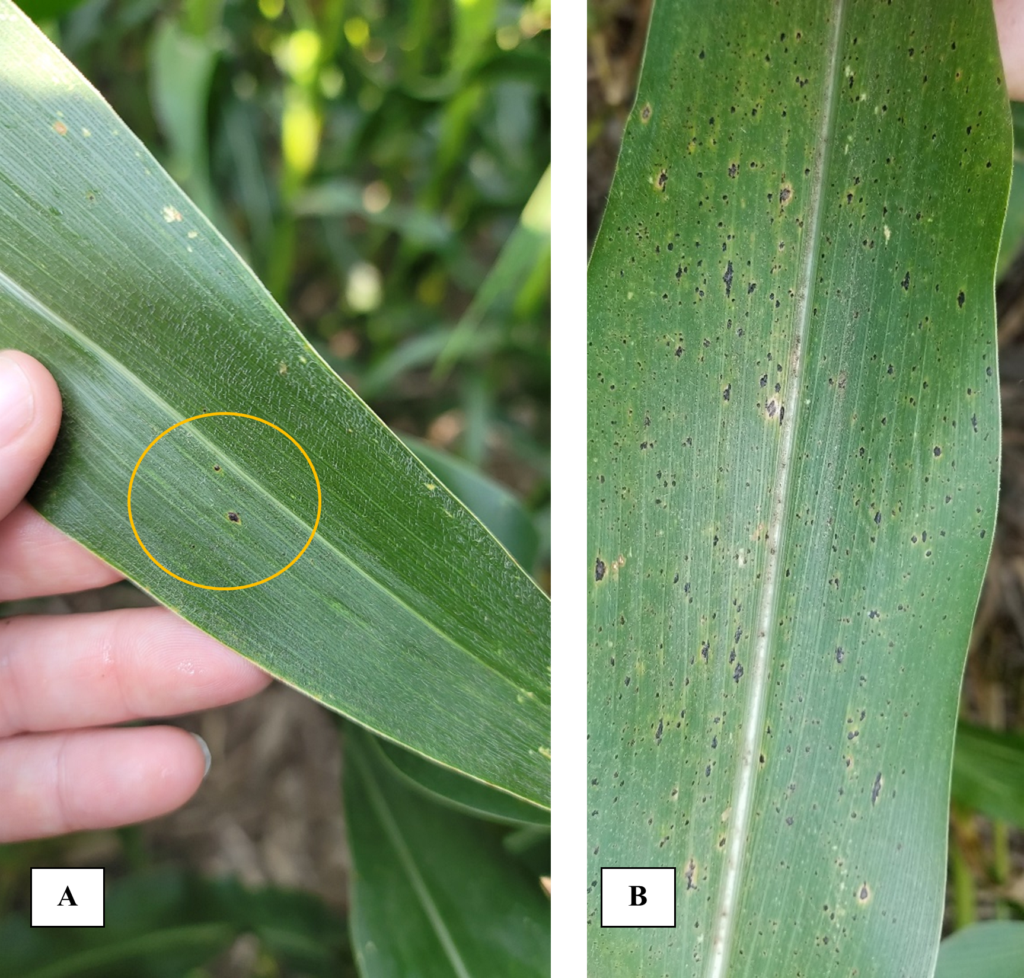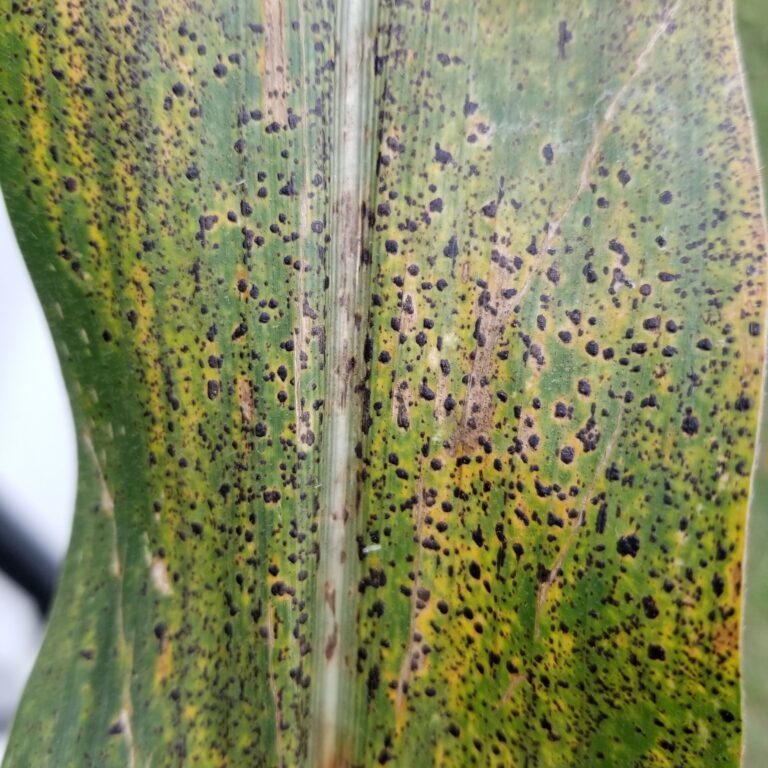I am already getting questions on tar spot management as we finish planting corn here in Indiana. Here’s the list of my 10 points after seven seasons of tar spot and few tips and tools to help make an informed decision on tar spot management.
My 10 Points:
- Every year has been different –the disease triangle is important, the environmental conditions now through June will determine when the disease gets started in the lower canopy.
- Scouting is critical – I would start keeping an eye out once corn reaches V7/V8 looking in the lower canopy to see if you can find any small stroma (Figure 1A). You want to catch the disease before severity ramps up. If it’s 5% or more in the upper canopy it’s too late to spray to slow it down (Figure 1B). Watch the map as we monitor for those first few initial spots!
- Host resistance is important – if you selected hybrids with some moderate resistance, you’ll be ahead of reducing disease in the canopy
- Fungicides will work, but tar spot shows limitations on residual activity and canopy coverage.
- Fungicide timing is critical – can be too early or too late. Based on our research data the optimum window for a single fungicide application is between tassel and milk (VT to R3).
- ROI – understand the numbers on 1x vs. 2x applications. If you trigger an early application, most likely you’ll have to come back to make sure coverage makes it to the end of the season.
- Corn will never be 100% clean at the end of the season – see #4
- Stewardship is important – let’s judicially use our fungicides when we know they will provide both disease management and yield protection.
- Use the tools (see below)
- Keep asking new questions to help us drive our next research objectives.
Here are some tools to bookmark.
Tar spot map: https://cropprotectionnetwork.org/maps/tar-spot-of-corn this page also has a handy table on our recommendations when to spray when tar spot is detected.
Tar spotter and forecasting tools: https://cropprotectionnetwork.org/crop-disease-forecasting This is a great new tool to see if environmental conditions have been favorable for tar spot.
Fungicide efficacy tables on Crop Protection Network https://cropprotectionnetwork.org/publications/fungicide-efficacy-for-control-of-corn-diseases There’s also a new tool to help sort products https://cropprotectionnetwork.org/fungicide-efficacy-tool
Indiana Field Crop Pathology website will have in-season updates (also weekly updates in Purdue Pest&Crop Newsletter) https://indianafieldcroppathology.com/
The Crop Protection Network has many articles, publications, maps, tools, and more to help with decisions related to protecting field crops https://cropprotectionnetwork.org/
In addition, for Indiana growers – with support from Indiana Corn Marketing Council – I will cover any corn disease samples submitted to our Purdue Plant Pest Diagnostic Lab (PPDL) to help us track both tar spot and other diseases this season https://ag.purdue.edu/department/btny/ppdl/
Please feel free to contact me with any of your Indiana field crop disease questions dtelenko@purdue.edu

